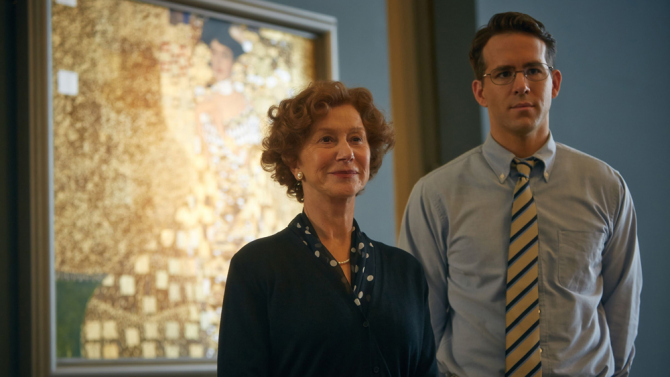News:
‘Woman in Gold’ and the Politics of Returning Nazi-Looted Art
By Ted Johnson

“Woman in Gold,” opening in theaters this weekend, depicts the politics and legal hurdles faced by Austrian Jewish immigrant Maria Altmann (Helen Mirren) and Los Angeles trial lawyer Randy Schoenberg (Ryan Reynolds) as they try to secure the return of Altmann’s family-owned Gustav Klimt painting looted by the Nazis.
The painting, depicting Altmann’s aunt Adele Bloch-Bauer, had become a famous museum attraction in Vienna — what some had called that country’s Mona Lisa.
Altmann and Schoenberg won back the painting, as well as other Klimt works taken by the Nazis during their occupation, but that was after an eight-year effort that went all the way to the Supreme Court and the gamble of an arbitration proceeding in Austria.
Schoenberg tells Variety‘s “PopPolitics” on SiriusXM, however, that the courtroom wrangling to win the return of Nazi-looted art continues, with an estimated 100,000 works of art still at issue, many missing. He’s involved in legal efforts to return 16th century Adam and Eve paintings, now in the possession of the Norton Simon Museum in Pasadena, to the family of a Dutch art dealer who fled Amsterdam with his family in World War II. (The paintings were featured in the opening credits of “Desperate Housewives.”)
“There are many, many cases like that and many, many items that haven’t been discovered,” Schoenberg says. “The 100,000 number — you could put any number on it because it just depends how far down you want to go in people’s possessions.”
The director of “Woman in Gold,” Simon Curtis, has said that his movie is a “love letter to U.S. immigration policy,” as it centers on the relationship with Altmann, who fled Vienna during the Nazi occupation with her husband and then settled in Los Angeles, teamed up in 1998 with Schoenberg, whose grandfather was famous Austrian composer Arnold Schoenberg and another Jewish immigrant.
“It seems a timely reminder, as some people are questioning immigration, of how valuable it can be for a lot of individuals and society,” Curtis says.
To hear the following, click on the link below:
Curtis talks about why it has taken families and governments generations to fully grapple with the return of artworks.
Schoenberg talks about how Altmann’s escape from Nazi-occupied Vienna with her husband Fritz was actually more harrowing than that depicted in the movie.


